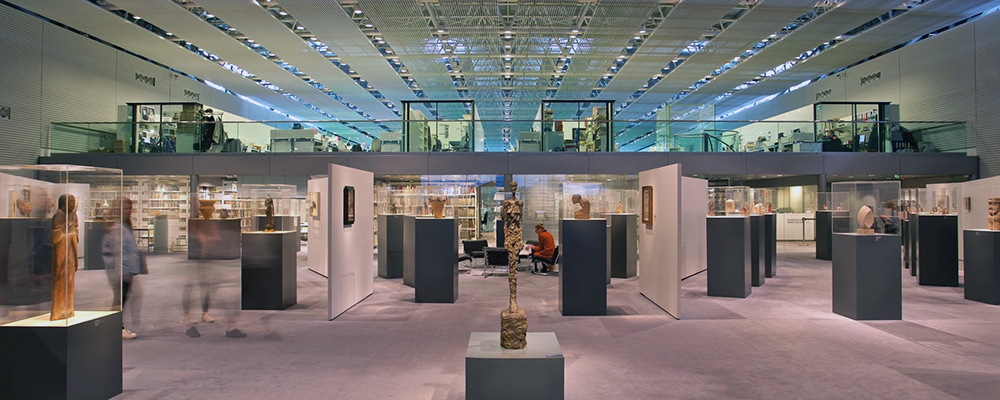
I am in my home town of Norwich, UK. One of the jewels of this fine city is The Sainsbury Centre for Visual Arts at the University of East Anglia. It’s a very cool place. It was built in 1978 to make accessible the stunning and eclectic collection of paintings, ceramics, sculptures and African masks belonging to Robert and Lisa Sainsbury. The Centre’s current exhibition “Planet for Our Future: The Stuff of Life / The Life of Stuff” is a must-see. This is master-class creativity in photography, video and installation. It succeeds in its objective of urging the visitor “to consider the global challenges of pollution, environmental destruction, and climate change.”
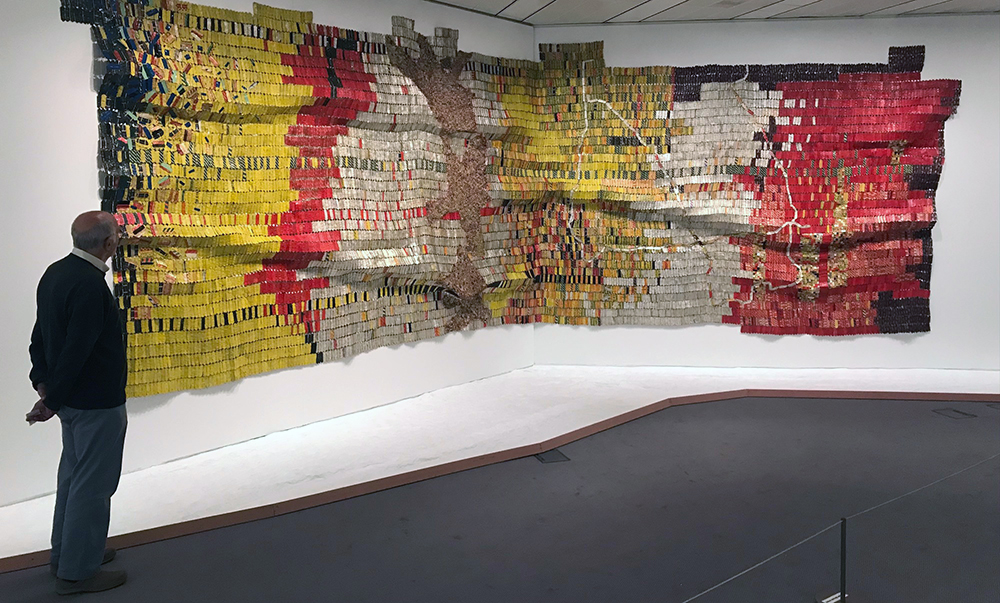
My co-visitor is Roger Bunting (who knows about art.) “I don’t think it’ll be easy on the eye” he says. He’s right, as usual. I am nevertheless unprepared for images and concepts powerful enough to whip my trotting eco-awareness into a galloping eco-concern. Deep in the exhibition space, I am stopped in my tracks by El Anatsui’s “Freedom.” Thousands of bottle tops scavenged from European waste exported to Nigeria are flattened and stitched together with copper wire.
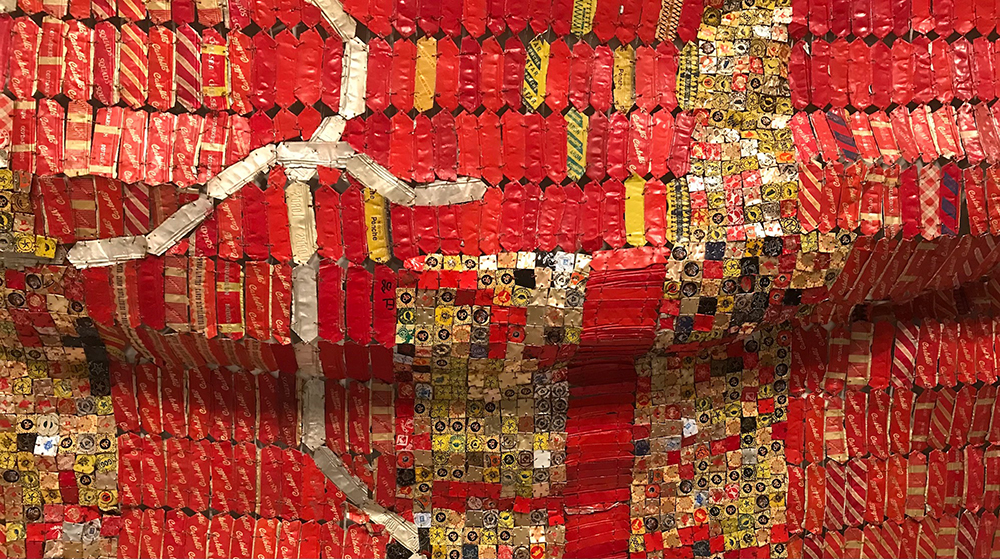
The “who,” “what,” “where” “when” and “how” of this beautiful stuff are clear. The “why” is made evident by the position of “Freedom” in the exhibition: in the section entitled “The Politics of Reclamation.”
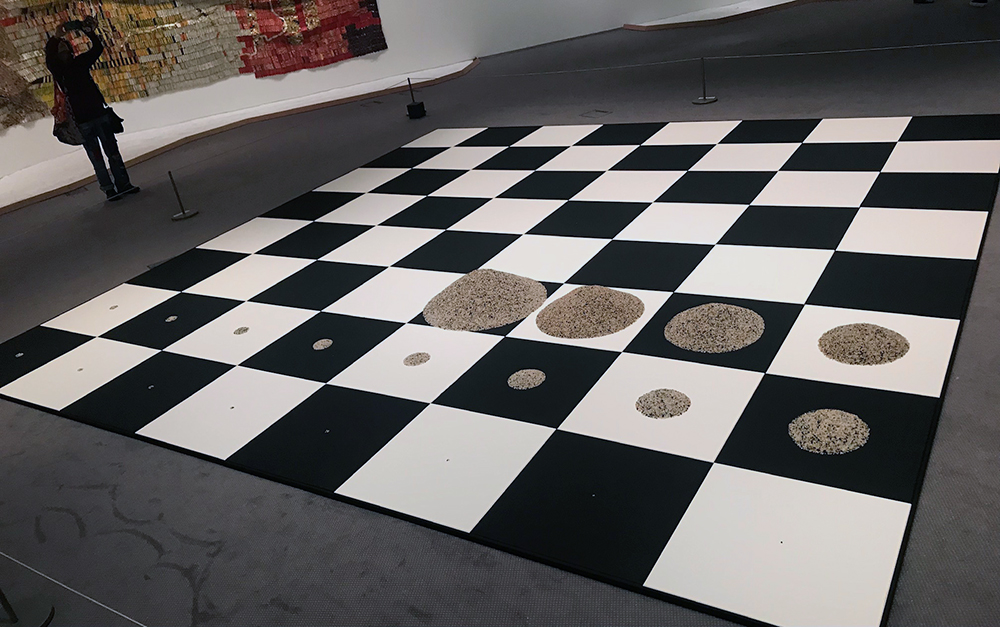
Maarten Vanden Eynde’s “Check Mate” is inspired by the story of the crafty king who commands his daughter’s suitor to put a grain of rice on the first square of a chess board. On the next day the king demands two grains on the second square. On the third day, four grains on the third square and so on. Each day, the number of grains on each successive square doubles. Of course, by day sixty four, the load of rice on the last square would represent all the rice grown in the world for several years. Here, Vanden Eynde replaces the grains of rice with “nurdles.” I learn a nurdle is a plastic pellet retrieved from a beach. (There really is a single nurdle on the first square!)
Did you notice the 2020 “Ongoing“? The nurdles are crowd sourced from beaches all over the world. Anyone can hand in their nurdles at the exhibition. When enough are collected, the next square will be piled high with the requisite number. This is a fabulously elegant statement about the widespread production and use of plastics and their increasingly evident environmental consequences.
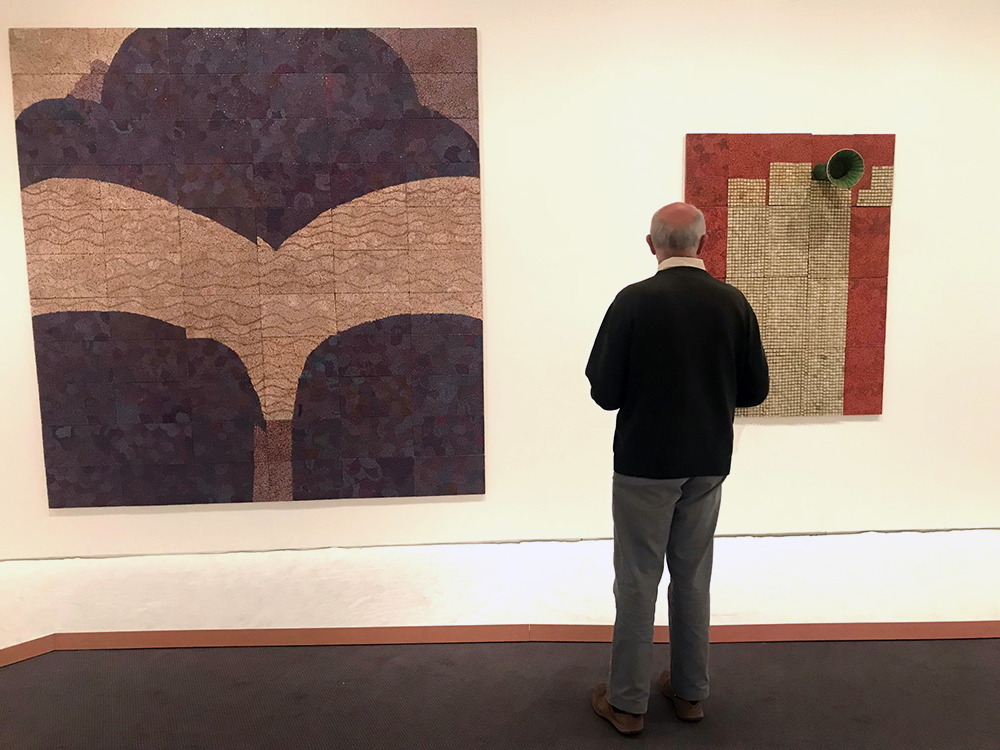
Roger drifts off to find more stuff. Elias Sime’s “Tightrope: Secured” catches his discerning eye. “Oi!” he calls to me. “Take a look at this!” The room’s vigilant attendant makes a kind of cautionary throat-clearing noise.
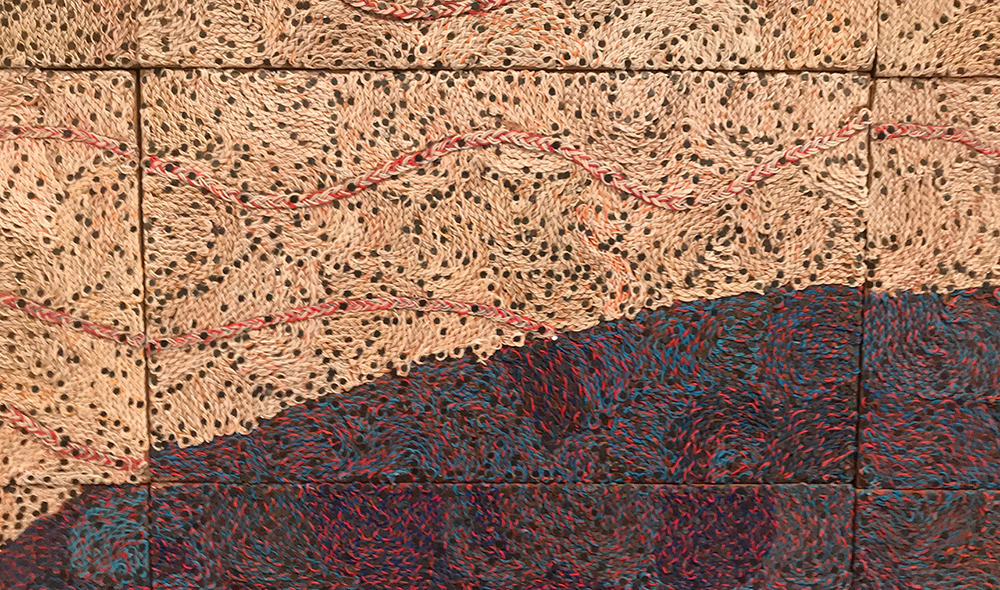
Each panel of “Tightrope: Secured” is made from the compression of thousands of braided wires ripped from redundant computers that are exported to Ethiopia from all over the world. The effect reminds me of a microscopic image of the intersection of white and grey brain matter. How appropriate for such an exhibition in 2023 – the year in which we all wake up to the fact that artificial intelligence is and will forever be a part of our lives!

Roger and I share a fascination for African masks. We’ve never found a totally adequate explanation of their meaning, especially those with the hooty-astonished round mouths. Inevitably, what Romuald Hazoumè from Benin has created from found objects catches our attention. In the context of this exhibition, the meaning of these “masks” is clear: plastic waste collides with the deepest aspects of African culture. But we are both laughing. Is this because the same building houses an exquisite and priceless collection of the real McCoy? Or is it because – as intended by the curators of this exhibition – us (white-rich-european-and-now-embarrassed) visitors are finally forced to ask ourselves if we really know what happens to stuff we chuck out?
